Texas Bird Hunting: Quail, Chachalaca, Woodcock, Doves, and More
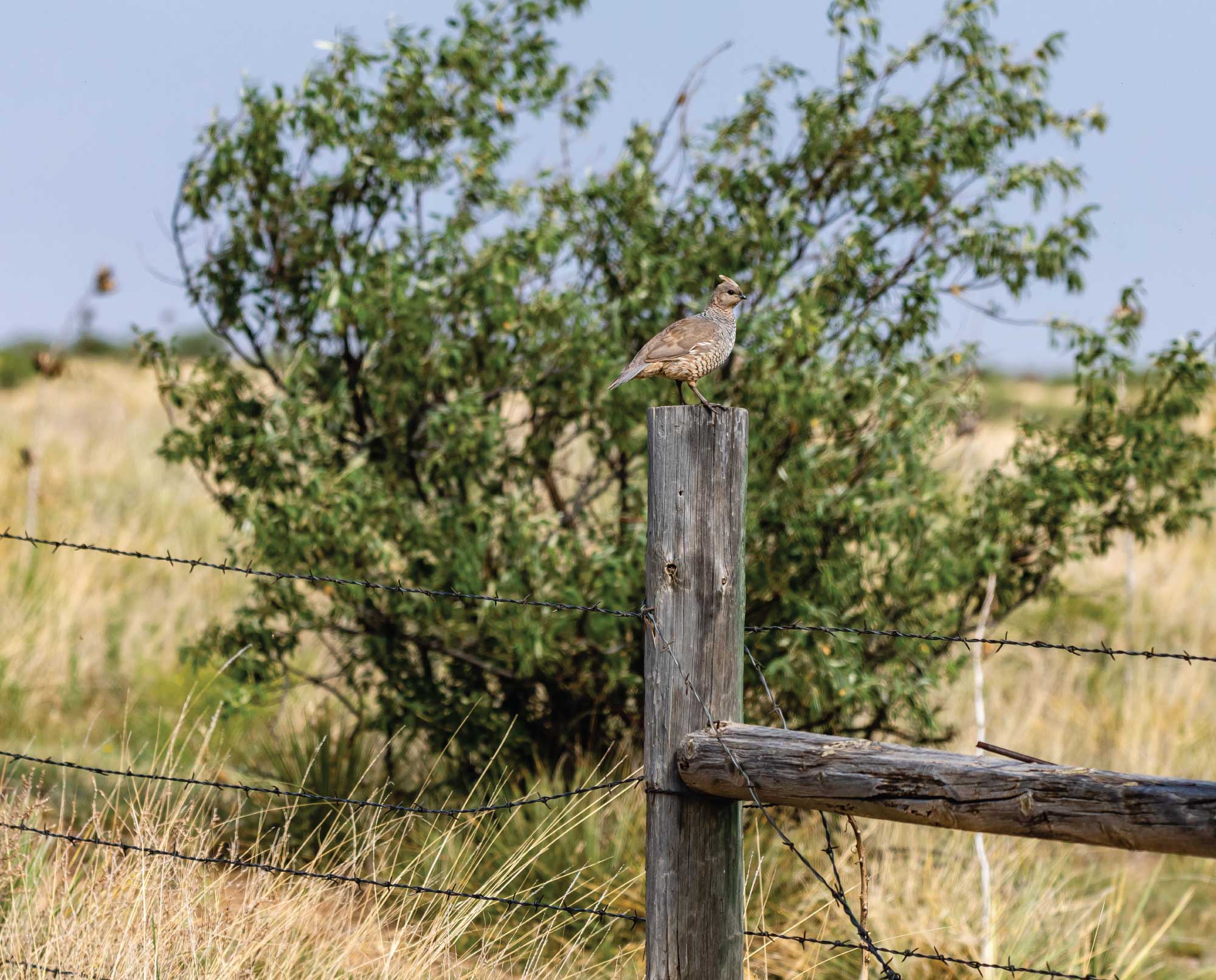
When bird hunting in Texas the big state although known for private land still offers great public lands opportunities for quail to woodcock.
In the minds of many, Texas is incorrectly thought of as one big desert. All that reveals, however, is that they have not spent any time in its eastern forests, lower marshes, or central plains. Even the region that contains desert, the Trans-Pecos region, has wooded slopes on some of its mountains. The diversity of these ten eco-regions adds up to big possibilities for bird hunting in Texas.
Famous for its quail hunting, Texas offers opportunities to hunt bobwhite, scaled (blue), and Gambel’s quail across various parts of the state. On the eastern side of the state, there are even lesser-known secrets of American woodcock hunting as the birds migrate south for the winter. Texas provides a unique chance to encounter the unusual Chachalaca, which often roosts in abandoned structures. And let’s not forget the iconic dove hunting in Texas!
Here’s everything you need to know for the 2023-24 Texas bird hunting season.
| Species* | Season | Daily / Possession Limit | Notes |
| American woodcock | Dec 18, 2023 – Jan 31, 2024 | 3/9 | HIP survey required |
| Chachalaca | Oct. 28, 2023 – Feb. 25, 2024 | 5/15 | Cameron, Hidalgo, Starr & Willacy Counties |
| Bobwhite Quail | Oct. 29, 2023 – Feb. 26, 2024 | 15 / 45 combined quail species | |
| Scaled (Blue) Quail | Oct. 29, 2023 – Feb. 26, 2024 | 15 / 45 combined quail species | |
| Gambel’s Quail | Oct. 29, 2023 – Feb. 26, 2024 | 15 / 45 combined quail species | |
| Mearns Quail | CLOSED | NONE | |
| Mourning, White-winged, and White-tipped Dove | Sept. 1 – Nov. 13 & Dec. 17, 2023 – Jan. 1, 2024 | 15/45 no more than 2/6 white-tipped doves | North Zone |
| Mourning, White-winged, and White-tipped Dove | Sept. 1 – Oct. 30 & Dec. 17, 2023 – Jan. 15, 2024 | 15/45 no more than 2/6 white-tipped doves | Central Zone |
| Mourning, White-winged, and White-tipped Dove | Sept. 14 – Oct. 30 & Dec. 17, 2023 – Jan. 22, 2024 | 15/45 no more than 2/6 white-tipped doves | South Zone |
| Special White-winged Dove | Sept. 2-4 & 9-11, 2023 | 15/45 | Shooting hours are from noon to sunset |
| Eurasian Collared Doves | No Closed Season | No Bag Limit | |
| Common Pigeons (Rock Doves) | No Closed Season | No Bag Limit | |
| Ring-necked pheasant | Dec. 2 – Dec. 31, 2023 | 3/9 Roosters only | Panhandle |
| Snipe | Nov 4, 2023 – Feb 18, 2024 | 8 / 24 | |
| Sora & Virginia Rails | Sept. 10-25 & Nov. 8 – Dec. 28, 2023 | 25/75 |
American Woodcock
American woodcock distribution in Texas is not entirely known. As a migratory bird, of course, American woodcock only spend some of their wintering time in Texas. The entrance and exit of woodcock into the state depends mostly on the weather. If the winter is really bad, you can find a good number of woodcock in the eastern portions of the state.
The American woodcock season runs from December 18 to January 31, with a daily bag limit of 3. Woodcock hunting is governed by federal migratory laws and a HIP Survey is required.
Chachalaca
One of the birds that makes bird hunting in Texas unique is the enigmatic chachalaca, which derives its name from the sound of its call. The bird spends its time enjoying an activity few other game birds enjoy: roosting on the branches of trees. This practice earned the bird the nickname of “Mexican Tree Pheasant.” You can find chachalacas in scrubland and tall thickets. They are distributed from the Lower Rio Grande Valley of Texas to Nuevo Leon, Mexico, and beyond.
The chachalaca season takes place in the four counties of Cameron, Hidalgo, Starr, and Willacy. It runs from October 28 to February 25. The daily bag limit is 5.
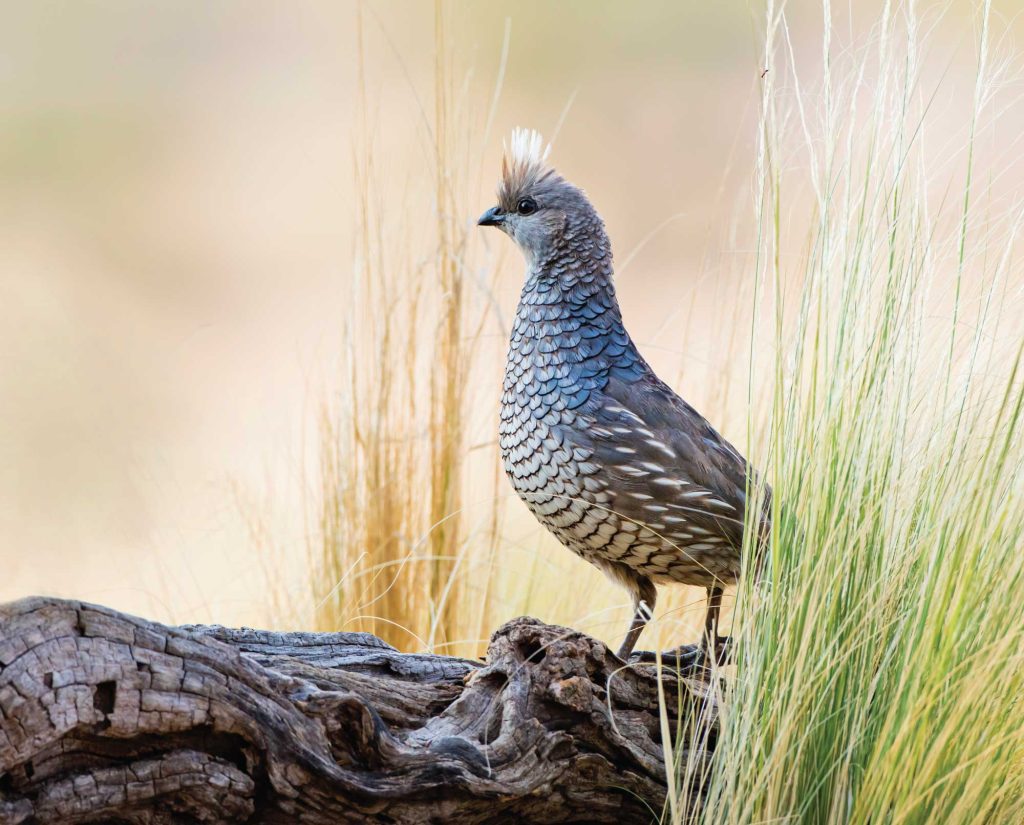
Quail Hunting in Texas
The three kinds of quail in Texas — bobwhite, scaled, and Gambel’s — are all good options for bird hunting. Scaled quail, also known as blue quail, are found in the western third of the state, while Gambel’s quail make their habitat in the Trans-Pecos region. Of the three, however, bobwhite quail are typically the most common statewide. There has been some decline in the quail population, but the fluctuating population levels are a distinct phenomenon for this species.
The quail season runs from October 29 to February 26, with a daily bag limit of 15.
Dove and Pigeon Hunting in Texas
Dove hunting in Texas is divided into North, Central and South Zones. There are three native species of doves to hunt: mourning doves, white-winged doves, and white-tipped doves. White-winged doves have their own special area. For more detailed information concerning the zones for bird hunting in Texas, check the website for the Texas Parks & Wildlife Department. When hunting dove in Texas, it is important to check the doves for leg bands. Though they are easy to overlook, you must report doves with leg bands.
The North Zone season runs from September 1 to November 13 and December 17 to January 1. The Central Zone season runs from September 1 to October 30 and December 17 to January 15. The South Zone season is from September 14 to October 30 and December 17 to January 22. While further regulations apply, the white-winged dove seasons adds the additional days of September 2-4 and 9-11. There is a daily bag limit of 15 doves, but not more than two white-winged. Doves are governed by federal migratory laws and a HIP Survey is required.
There is no closed season or limit for Eurasian collared doves and common pigeons (rock doves).
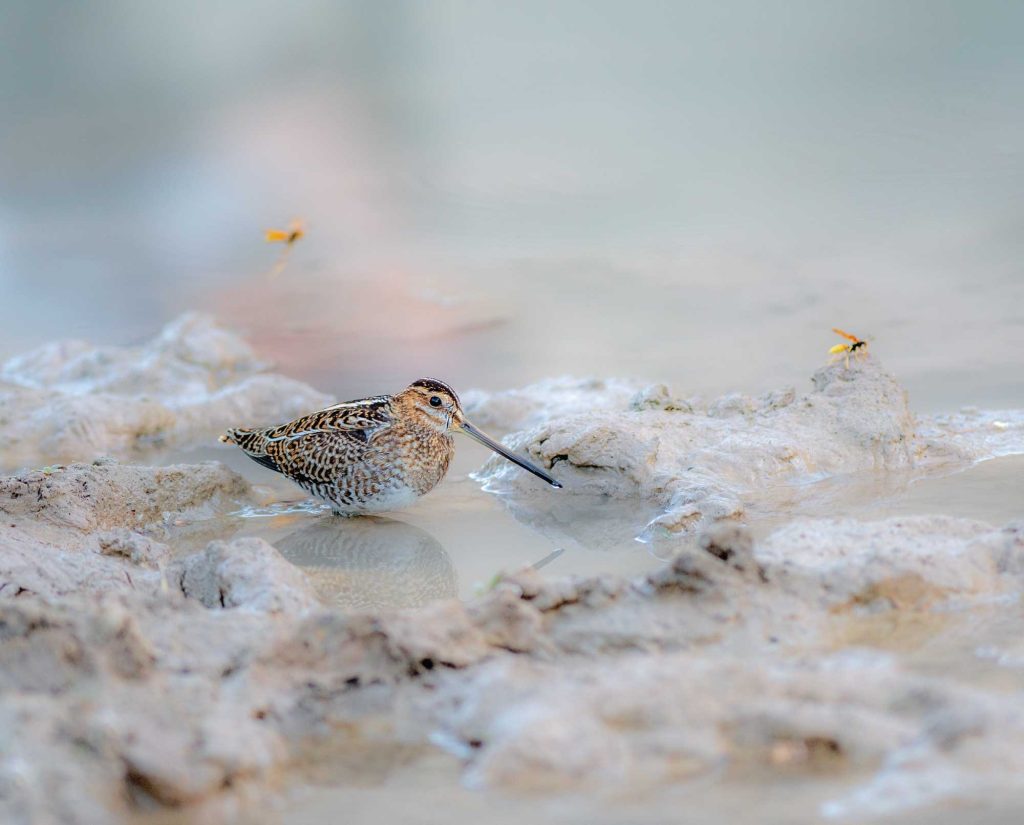
Other Species for Bird Hunting in Texas
There are other great species for bird hunting in Texas. Wilson’s snipe, a migratory bird, and rail seasons are available. In addition to snipe hunting, ring-necked pheasant are open for bird hunting in Texas. While not a native bird, there are healthy populations in the Texas panhandle. Pheasant hunting season in the panhandle runs from December 2-31.
Related Conservation and Non-Profit Organizations for Texas Bird Hunting
North American Versatile Hunting Dog Association (NAVHDA)
Hunting License Requirements and Fees
| License* | Resident | Non-resident |
| Annual Hunting | $25.00 | $315.00 |
| 5-day hunting license | N/A | $48.00 |
| Special Small Game/Exotic Hunting | N/A | $132.00 |
| Annual Hunting Youth (Under 17) | $7.00 | N/A |
| Annual Hunting Senior (65+) | $7.00 | N/A |
| Upland game bird endorsement | $7.00 | $7.00 |
| Migratory game birds endorsement | $7.00 | $7.00 |
The Hunter Safety Course and Dog Training for Bird Hunting in Texas
The state of Texas requires anyone looking to buy a hunting license to have met the requirements of the corresponding hunter education programs. There are three ways to get that education certificate for bird hunting. The first is a classroom course that will take six hours. Another option is a four hour field day plus an approved online course. Finally, Texas offers an online course for Texas residents that anyone over 17 can take for $34. For further information, go to the online hunter safety course.
You may train your dog for bird hunting in Texas during established seasons on specific hunt areas.
*The bird hunting season dates, game bird species available, and other information is subject to change. The article may not reflect this. Please visit the Texas Parks & Wildlife Department for the most up-to-date information on bird hunting in Texas.




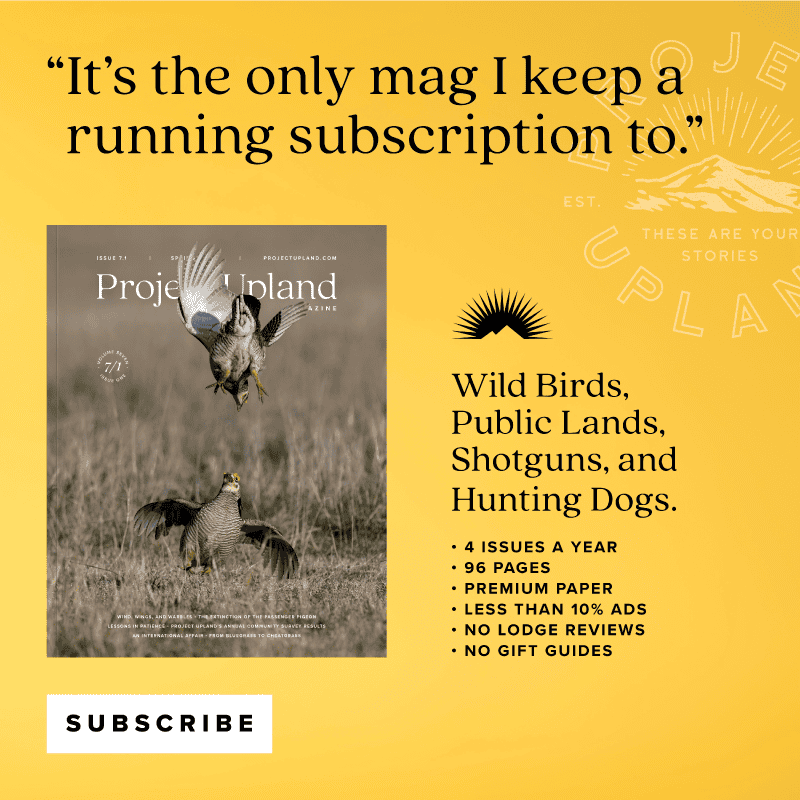


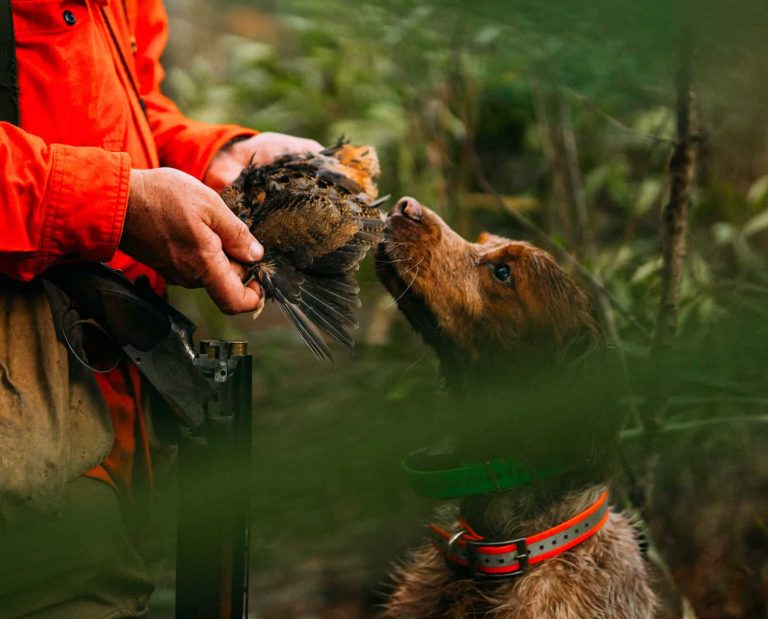



Thank you! As I hunt for my first shotgun for the field, this has been very helpful. My budget is $1K, and it’s good to know I can find a decent O/U for my first time out.
Happy to help out.
Can you please comment further on the following? “While all three work for upland hunting, straight and semi-pistol grip buttstocks are best for birds.”
Ergonomically, I’ve read pistol grips are best. Most English doubles are straight grips, but it seems most Parkers I come across have pistol grips. And very few, if any, O/Us have straight grips. The best I can come up with is that straight grips were designed a long time ago for live bird shooting, and pistol grips are preferred for more modern target games because of ergonomics and pointability. But wouldn’t that make them better for live birds too?
Thanks for your help!
Yeah – I think you’re right. People have realized the benefits of pistol grip stocks. Personally, I like real open round-knob stocks or slight pistol grips for bird shooting. I don’t like those full pistol grips you find on target guns unless I’m shooting clays.
I’m retired military and have used shotguns but not in hunting and attempting to assist my son who lives in Maine in purchasing a shotgun for bird and waterfowl hunting. I noticed you did not mention ducks in your article. Does any/all of your comments apply to duck hunting.
Great article, well written and very educational.
Thank you.
Rick B.
Hey. Rick.
Thanks for the kind words.
Duck hunters have to consider things like steel shot and wet, muddy conditions.
Vintage SxS and OUs were not made to shoot steel shot. While you can shoot non-toxic shot like Bismuth through them, Bismuth-ammo is expensive and hard to find in load appropriate for old doubles. And an old double isn’t the best choice for really tough weather conditions. While they can take beatings, they can break. And when they do, they can be harder to repair. Personally, I would get something like a Benelli Super Black Eagle. Those are awesome duck guns. You can shoot steel through them, they’re built to be abused, and they’re easy to clean up after a muddy day outdoors.
Gregg
“While all three work for upland hunting, straight and semi-pistol grip buttstocks are best for birds.” Amen!!!!! I have looked at several O/U shotguns that were very nice, but only come with a very harsh full pistol grip. Great on the trap line, and horrible to carry at the ready in the field. If you have any pull with these gun makers tell them to stop making upland guns with trap gun stocks.
First bird fun. Find something that fits either a 12 or 20 gauge. Get something in a medium weight and barrel length with modified or more open chokes. Pattern the gun, know where it shoots. Light, short barrel, quick pointing shotguns are a bird hunters best friend but in own experience, it took a lot years to become competent hunting with them.